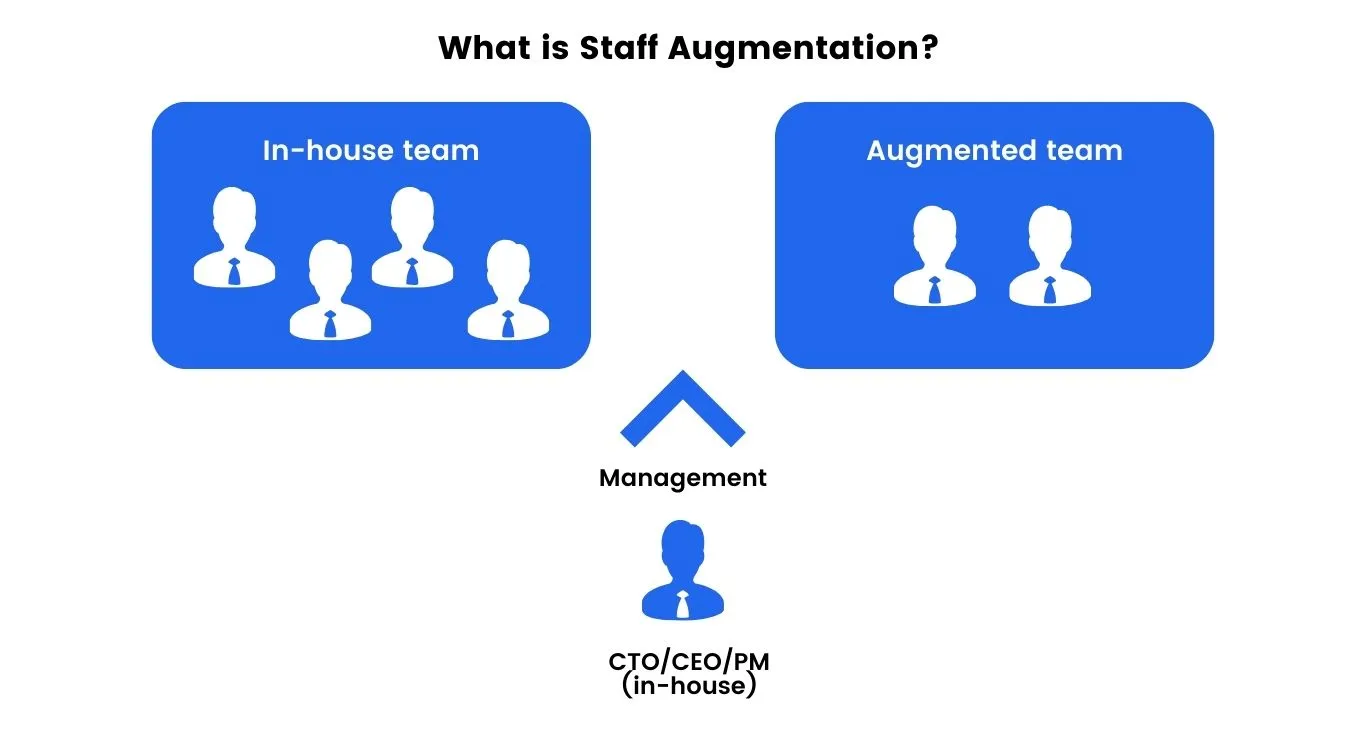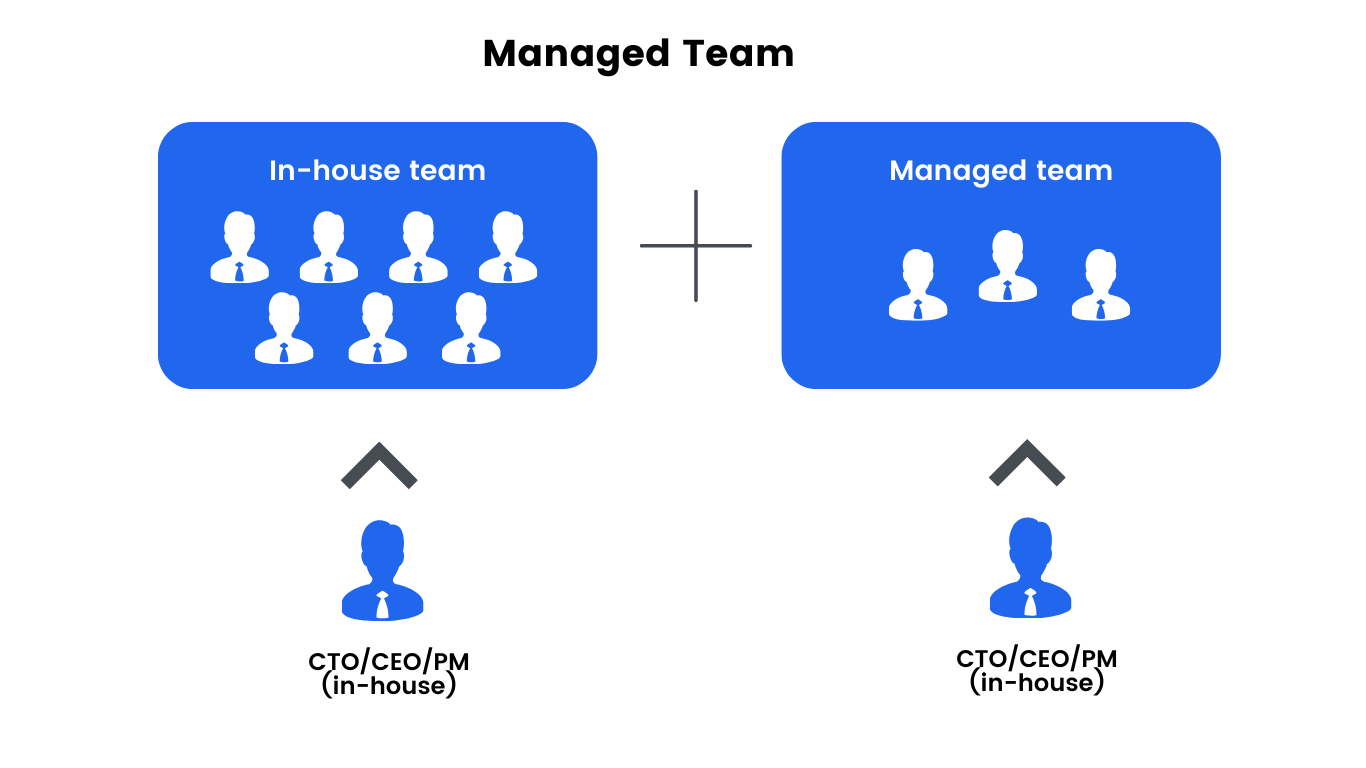Outsourcing to Czechia

How much does it cost to hire developers in Czechia?
Dec 2nd 25 - by Devico Team
Find out how much it costs to hire software developers in Czechia in 2025. Compare hourly rates, roles, and factors that impact pricing.
Hire
Hire by role
Hire Front-end developers
Hire Back-end developers
Hire Full-stack developers
Hire Android developers
Hire iOS developers
Hire Mobile developers
Hire AI engineers
Hire ML engineers
Hire Automation QA engineers
Hire Blockchain developers
Hire Data engineers
Hire Cloud engineers
Hire by skill
Hire JavaScript developers
Hire TypeScript developers
Hire Ruby on Rails developers
Hire React Native developers
Hire Flutter developers
Hire Golang developers
Hire React.js developers
Hire Python developers
Hire PHP developers
Hire .NET developers
Hire Java developers
Hire Laravel developers

Staff augmentation
January 23, 2024 - by Devico Team
Summarize with:
When businesses look for tech talent, there are several routes: hiring in-house, outsourcing projects, or blending both. Within outsourcing itself, the discussion frequently boils down to managed services vs outsourcing in its more traditional forms.
Staff augmentation gives you extra hands fast: developers who slot into your existing team and follow your workflows. Managed services, on the other hand, shift responsibility to a vendor who owns delivery end-to-end, from milestones to SLAs.
Both models promise efficiency, but they solve different problems. One maximizes agility and control; the other prioritizes predictability and accountability.
So which outsourcing model aligns best with your goals for faster scaling or turnkey execution?
PR Newswire projects that the staff augmentation services market will see an incremental spend of about USD 81.87 billion, with a compound annual growth rate of 3.53% during the five-year forecast period. On the other hand, the Statista survey predicts that the global managed services market is expected to exceed 500 billion U.S. dollars in 2028.
Staff augmentation is a flexible outsourcing model where you “borrow” skilled developers from a vendor to temporarily extend your in-house team. Instead of hiring full-time employees, you quickly plug in external talent that works under your direction, using your processes, tools, and project management approach.
The appeal is obvious. Need a cloud architect for three months? Or five QA engineers to speed up a release cycle? With staff augmentation, you bypass long recruitment cycles and access vetted specialists almost immediately.
The Deloitte study found that 55% of companies are currently using staff augmentation, and an additional 20% plan to use it in the near future.
IT specialists provided by an external vendor join an in-house team and closely cooperate with it for as long as their help is needed. Once a task or project is completed, these external specialists can be released without long-term commitments.
This makes it easy to integrate a staff augmentation model with an in-house development team as an effective way to address short-term tasks requiring niche expertise or to quickly bridge skill gaps in your internal team.
In the staff augmentation vs managed services model comparison, this approach clearly leans toward flexibility and control on the client’s side.

Due to its ability to bring in the right experts fast without long-term obligations, lengthy recruiting cycles, or the overhead of full-time hiring, staff augmentation has become one of the most widely used models in today’s IT industry.
When weighing the strengths and weaknesses of staff augmentation, businesses often focus on its speed and flexibility versus the management effort it requires. This model is highly effective when used strategically, but it’s not a one-size-fits-all solution.
Efficient resource management: With staff augmentation, you can quickly adjust the size and composition of your team without the burden of long-term obligations or layoffs. Scaling up or down happens smoothly, based on project needs.
Boosted team performance: External specialists reinforce your in-house team, taking on specific tasks or helping clear bottlenecks so deadlines are met without burnout. In this sense, staff augmentation acts as an always-available backup force.
Affordable access to top-tier talent: Beyond lower hourly rates, companies save on recruitment, training, benefits, and workspace maintenance. That’s why startups and SMEs often see staff augmentation as the sweet spot between quality and affordability.
Swift talent gap coverage: Finding niche IT specialists can take months. Augmentation firms accelerate this process, connecting you with the right talent from full-stack developers to AI engineers within days or weeks.
Knowledge transfer and upskilling: Augmented staff integrate into your team, bringing best practices and new skills that your internal team adopts, strengthening future project capabilities.
image
Extra managerial effort: Remote external staff require more oversight. Processes often need fine-tuning to align internal and external contributors across time zones.
Risk of communication gaps: Time differences, cultural nuances, or language barriers can slow collaboration. Strong communication protocols are essential to avoid delays.
Potential quality risks: As with any cooperation model, quality can vary. Mitigation requires choosing a trusted vendor, setting clear metrics for evaluating staff augmentation, checking candidate credentials carefully, and securing a solid contract to protect your interests.
How to get IT staff augmentation right
Managed software developing services are a comprehensive outsourcing model where an external provider takes full responsibility for delivering a defined scope of IT operations or projects.
Unlike staff augmentation, where you manage external engineers directly, in managed services the vendor owns the process from planning and execution to monitoring, maintenance, and SLAs.
This fundamental contrast defines the staff augmentation vs managed services model and helps businesses decide which approach best aligns with their goals.

Companies can delegate to MSPs almost anything: cybersecurity, DB administration, software development, cloud migration, network performance monitoring, and many others.
The most popular managed services in Europe and North America were security and business apps. Managed services for cloud, container technology, big data, and Internet of Things (IoT) platforms are expected to hold much potential for managed service providers in the future.
As opposed to augmented staff companies, whose specialists join an internal team and collaborate with it, a managed service provider works independently based on a signed service-level agreement.
The provider delivers a price quote, time estimation, and plan, and once the client approves, takes full responsibility for execution while ensuring regular progress reports. This highlights a key difference between staff augmentation and managed services where one integrates into your workflows, while the other delivers outcomes as a standalone partner.
Managed IT services cover a broad spectrum of offerings, and companies usually select them based on their most pressing needs.
The most popular managed IT services categories include:
IT infrastructure management: Vendors handle core infrastructure like servers, networks, backups to ensure reliability and uptime without stretching internal resources.
Application management services: Full lifecycle support for apps and websites, from updates and bug fixes to performance optimization and continuous improvement.
Managed cybersecurity: Outsourcing security operations to specialists who provide vulnerability management, threat detection, incident response, and proactive risk prevention.
Network management: Monitoring and maintaining network health, including performance tuning, security oversight, and troubleshooting.
Cloud management: Helping businesses migrate, optimize, and secure their cloud environments while maintaining cost efficiency and compliance.
IT support: Remote help desks and support teams that resolve user issues quickly, easing the burden on internal staff and improving service quality.
Now, it’s time to look at the advantages and drawbacks of managed IT services. This model can deliver predictable outcomes and reduce internal strain, but it also introduces trade-offs in flexibility and control.
Access to extensive expertise: Managed service providers employ specialists who excel in specific technologies, tools, and domains. By leveraging their deep knowledge, you gain best practices, adopt new trends faster, and align IT with business goals.
Focus on core priorities: Delegating non-core functions allows in-house teams to concentrate on strategic initiatives and critical tasks that directly fuel business growth.
High adaptability: Providers adjust quickly to shifting requirements — scaling teams, extending service scope, or tailoring solutions to fit on-demand needs.
Access to advanced technologies: MSPs invest heavily in modern software and hardware, giving clients access to cutting-edge tools that boost productivity and innovation without additional capital costs.
Cost efficiency: Subscription-based or pay-as-you-go pricing models reduce infrastructure and staffing expenses, making managed services affordable even for companies with limited budgets.
The control dilemma: While handing full accountability to a provider eases your burden, it also means giving up control over day-to-day processes and decision-making.
Provider dependency: Outsourcing critical IT functions inevitably creates reliance on your managed service provider. Any downtime or performance issues on their side can ripple into your operations.
Loss of in-house expertise: Over time, leaning too heavily on external partners may limit the growth of your internal team, leaving them without the specialized knowledge to operate independently.
Security concerns: Working with a provider requires granting access to infrastructure and sensitive data. If their security standards are weak, your business could face compliance challenges or data breaches.
Quality risks: Service quality varies widely across providers. To minimize risk, it’s important to check reviews, examine portfolios, and request a proof of concept before committing.
Many business leaders often ask themselves: why managed services and why not staff augmentation or the other way around. The answer depends on your priorities: whether you value agility and control in staff augmentation or predictability and accountability of managed services.
Goal
To reinforce an in-house team.
To entrust specific responsibilities and tasks to external experts.
Expertise
Brings in specific skills needed for particular task execution or project development.
Offers access to extensive expertise across the most diverse IT areas.
Flexibility
Highly flexible, giving an opportunity to easily adjust team size and composition.
Provided services can be adjusted with regard to client needs.
Control
A business manages augmented staff on its own, having complete control over them.
A business entrusts management of its particular tasks or processes to an outsourcing partner, which results in lax control.
Cost
A business is charged monthly based on the hourly rate of each augmented specialist.
A business is charged on a subscription or pay-as-you-go model.
Duration
Particularly suitable for short-term tasks but can be used for long-lasting ones as well.
Suggests long-lasting partnership with ongoing IT support and maintenance.
Knowledge sharing
Facilitates knowledge sharing as external staff introduce new practices and bring new knowledge that in-house teams adopt.
Does not foster knowledge sharing and may result in a loss of in-house expertise.
Team
Augmented staff join an internal team and closely collaborate with it.
A team of a managed service provider works autonomously.
Responsibility
A business holds responsibility for the project outcomes.
A managed service provider is responsible for the quality of delivered services and solutions.
Staff augmentation and managed services both help companies operate smoothly and complete projects successfully. The difference between staff augmentation and managed services lies in the level of control and responsibility: the former suits businesses that want flexibility, short-term support, and direct oversight, while the latter is a fit for those needing ongoing assistance and full delegation of IT functions.
Comparing managed services vs outsourcing in its more traditional form, the distinction becomes even clearer. Managed services provide long-term accountability and predictable outcomes, whereas classic outsourcing is usually project-based with limited continuity.
In short, staff augmentation vs. managed services is not a difficult choice if you understand the concept behind each model and align it with your priorities.
Outsourcing to Czechia

Dec 2nd 25 - by Devico Team
Find out how much it costs to hire software developers in Czechia in 2025. Compare hourly rates, roles, and factors that impact pricing.
Outsourcing to Czechia

Nov 25th 25 - by Devico Team
Compare Czechia and Poland for software outsourcing in 2025. Discover costs, talent, infrastructure, and which country fits your project best.
Outsourcing to Czechia

Nov 18th 25 - by Devico Team
A complete guide to outsourcing software projects to Czechia, learn about costs, talent, benefits, and how to build successful partnerships in 2025.